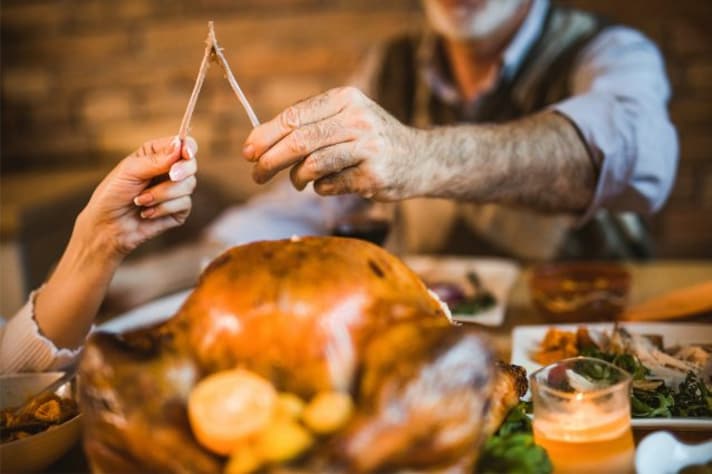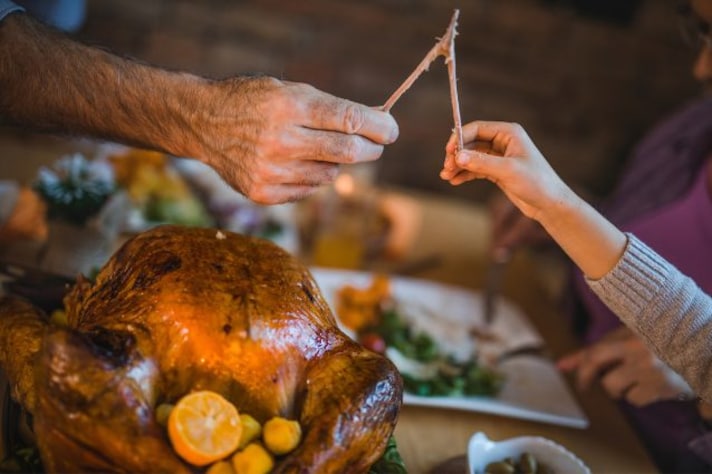
Thanksgiving may be synonymous with turkey, stuffing, and pumpkin pie, but there’s another tradition nestled within the bird itself: the wishbone. After the turkey is carved, two people tug on this tiny, forked bone, hoping to secure the bigger piece and have their wish granted. While it’s a fun moment of holiday whimsy, the wishbone tradition goes back centuries, with a fascinating blend of history, symbolism, and a bit of friendly competition.
What Does the Wishbone Symbolize?
The wishbone isn’t just a random bone—it’s loaded with symbolic meaning. In folklore, it represents hope, luck, and fortune. The shape of the wishbone, with its two outstretched “arms,” has made it a symbol of connectivity, tying it to the idea of bringing wishes and dreams together. For many, it’s a way to seal a wish in a moment that carries forward into the year, a small tradition that embodies the promise of future luck.

The Origins of the Wishbone Tradition
The wishbone tradition has deep roots stretching back to ancient Italy, where the Etruscans believed birds, particularly chickens, had prophetic powers. After a chicken’s death, they would lay the furcula, or wishbone, in the sun and stroke it while making wishes, hoping to gain some wisdom from the bird. With only so many wishbones to go around, the custom evolved to breaking it between two people, thus allowing more people to participate in the luck. When the Romans came across the practice, they brought it to England, where it eventually crossed the Atlantic with the Pilgrims, who adapted it to the American turkey.
How to Break the Wishbone
While it may look like a simple tug-of-war, breaking the wishbone comes with its own set of rules for maximum luck potential. The goal is to claim the larger half, which, according to tradition, grants the holder their wish. Experts say a dry wishbone is easier to break, so many prefer to let it sit out for a few days. When the big moment arrives, each person grips one side of the bone, typically the thicker side for a better chance, and pulls. Tactics include keeping one’s side steady and “choking up” closer to the base for leverage. As with any tradition, a little friendly strategy never hurts!

What the Outcome of the Break Means
The way the wishbone breaks can be as telling as the wish itself. Whoever ends up with the larger piece is said to have their wish granted, symbolizing a bit of cosmic good fortune in their favor. For the one left with the smaller piece? Tradition holds that it’s simply a missed wish, though some say they’ll have better luck next time. And in the rare case the wishbone doesn’t break, or splits evenly, it’s considered an auspicious sign of shared luck or an indication that both parties may have their wish granted.
;Resize,width=767;)
